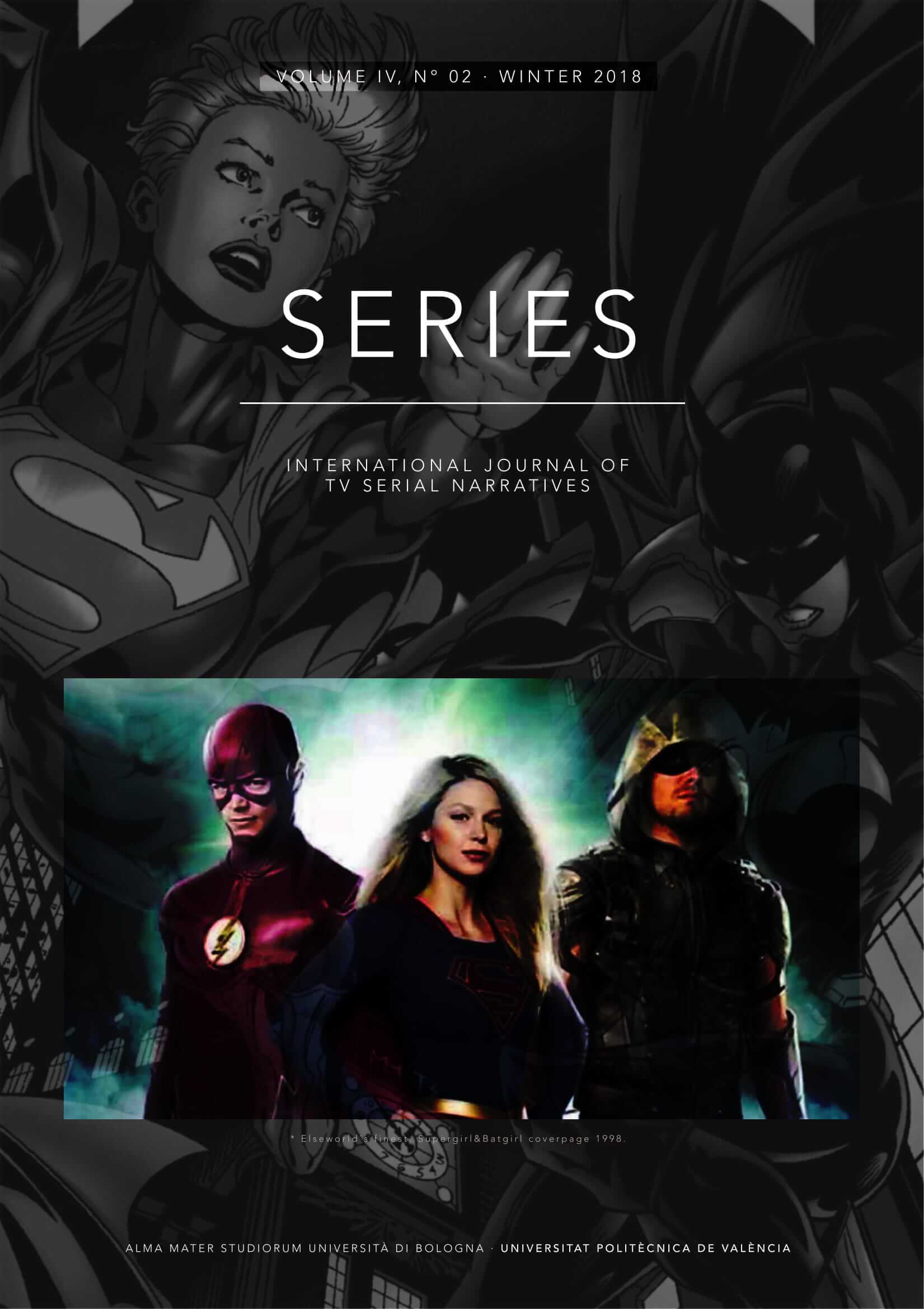“When you see me again, it won't be me”. Twin Peaks from the Multichannel Era to the Digital Era
DOI:
https://doi.org/10.6092/issn.2421-454X/8362Keywords:
Twin Peaks, audiovisuality, storytelling, TV series, David LynchAbstract
On its debut in 1990, David Lynch and Mark Frost's TV series Twin Peaks aired during the “multichannel era” on the broadcasting channel ABC, one of the three free-to-air US TV networks at the time. ABC imposed major plot developments, e.g. the revelation of Laura Palmer's murderer early in season two, which the two creators intended to keep the mystery unsolved for a much longer time. For the revival of Twin Peaks (2017, during the digital era), distributed by Showtime, Lynch and Frost created a more complex audiovisual product. The Twin Peaks revival was realized with far more authorial liberty, due to the indisputable celebrity of Lynch and the possibility—fostered by the subscription-based premium cable platform Showtime—of aiming at a niche audience, a possibility that George Gilder foresaw in 1990. As a result, not only Twin Peaks – The Return's plot is much more complex than in the first two seasons, but it also proves how television in the digital era can lead to the creation of audiovisual narratives that fully exploit every audiovisual semiotic level.References
Brooks, Peter (1984). Reading for the Plot. Design and Intention in Narrative. Cambridge (MA) and London: Harvard University Press.
Eco, Umberto (2016). Lector in fabula. La cooperazione interpretativa nei testi narrativi. Milano: Bompiani.
Eliot, T.S. (1958). Selected Prose, edited by J. Hayward. Harmondsworth: Penguin.
Entertainment Weekly, 6 April 1990.
Frost, Mark (2016). The Secret History of Twin Peaks. New York: Flatiron Books.
—— (2017). The Final Dossier. New York: Flatiron Books.
Gilder, George (1994). Life After Television. The Coming Transformation of Media and American Life, revised edition. New York and London: W.W. Norton and Company.
Hague, Angela (1995). “Infinite Games: The Derationalization of detection in Twin Peaks.” In Full of Secrets. Critical Approaches to Twin Peaks, edited by David Lavery, 130—43. Detroit: Wayne State University Press.
Jenkins, Henry (1995). “Do You Enjoy Making the Rest of Us Feel Stupid?: alt.tv.twinpeaks, the Trickster Author, and Viewer Mastery.” In Full of Secrets edited by David Lavery, 51—69.
Jensen, Jeff (2017). “This Week's Cover: Exclusive details on the Twin Peaks revival”. Entertainment Weekly, March 23. www.ew.com/tv/2017/03/23/twin-peaks-revival-showtime-cover/ (last accessed 28-10-18).
Johnson, Steven (2005). Everything Bad is Good for You. London: Riverhead Books.
Kalinak, Kathryn (1995) “'Disturbing the Guests with This Racket': Music and Twin Peaks.” In Full of Secrets, edited by David Lavery, 82—92.
Kermode, Frank (1967). The Sense of an Ending. Studies in the Theory of Fiction. Oxford: Oxford University Press.
Landau, Neil (2017). Netflix e le altre. La rivoluzione delle TV digitali. Roma: Dino Audino.
Lavery, David (1995), “Introduction: Twin Peaks' Interpretive Community.” In Full of Secrets, edited by David Lavery, 1—21.
Lotz, Amanda (2007). The Television Will Be Revolutionized. New York: New York University Press.
Lynch, Jennifer (2011). The Secret Diary of Laura Palmer, with a foreword by Twin Peaks cocreators Mark Frost and David Lynch. New York et al.: Gallery Books.
Lynch, David, and Kristine McKenna (2018). Room to Dream. New York: Random House. E-pub.
Mittell, Jason (2015). Complex TV. The Poetics of Contemporary Television Storytelling. New York and London: New York University Press.
Ong, Walter (2002). Orality and Literacy: The Technologizing of the Word, 2nd edition. New York: Routledge.
Postman, Neil (2006), Amusing Ourselves to Death. Public Discourse in the Age of Show Business. New York: Penguin.
Rodman, Howard A. (1989). “The Series That Will Change TV”, Connoisseur, September, 139-44.
Rodley, Chris (1998) (edited by). Lynch secondo Lynch, translated in Italian by Marco Borroni. Milano: Baldini & Castoldi.
Rossini, Gianluigi (2016). Le serie TV. Bologna: il Mulino.
Time (1990), 1 October.
Wallace, David Foster (1993). “E Unibus Pluram: Television and U.S. Fiction.”. Review of Contemporary Fiction 13(2):151-94.
—— (1996). “David Lynch Keeps His Head.” Premiere, September. http://www.lynchnet.com/lh/lhpremiere.html (last accessed 28-06-18).
Wells, David (1991), The Penguin Dictionary of Curious and Interesting Geometry. London: Penguin.
Weisstein, Eric W., “Möbius Strip”. MathWorld – A Wolfram Web Resource, www.mathworld.wolfram.com/MoebiusStrip.html (last accessed 26-06-18).
Downloads
Published
How to Cite
Issue
Section
License
Copyright (c) 2018 Carlotta Susca
Copyrights and publishing rights of all the texts on this journal belong to the respective authors without restrictions.
This journal is licensed under a Creative Commons Attribution 4.0 International License (full legal code).
See also our Open Access Policy.





